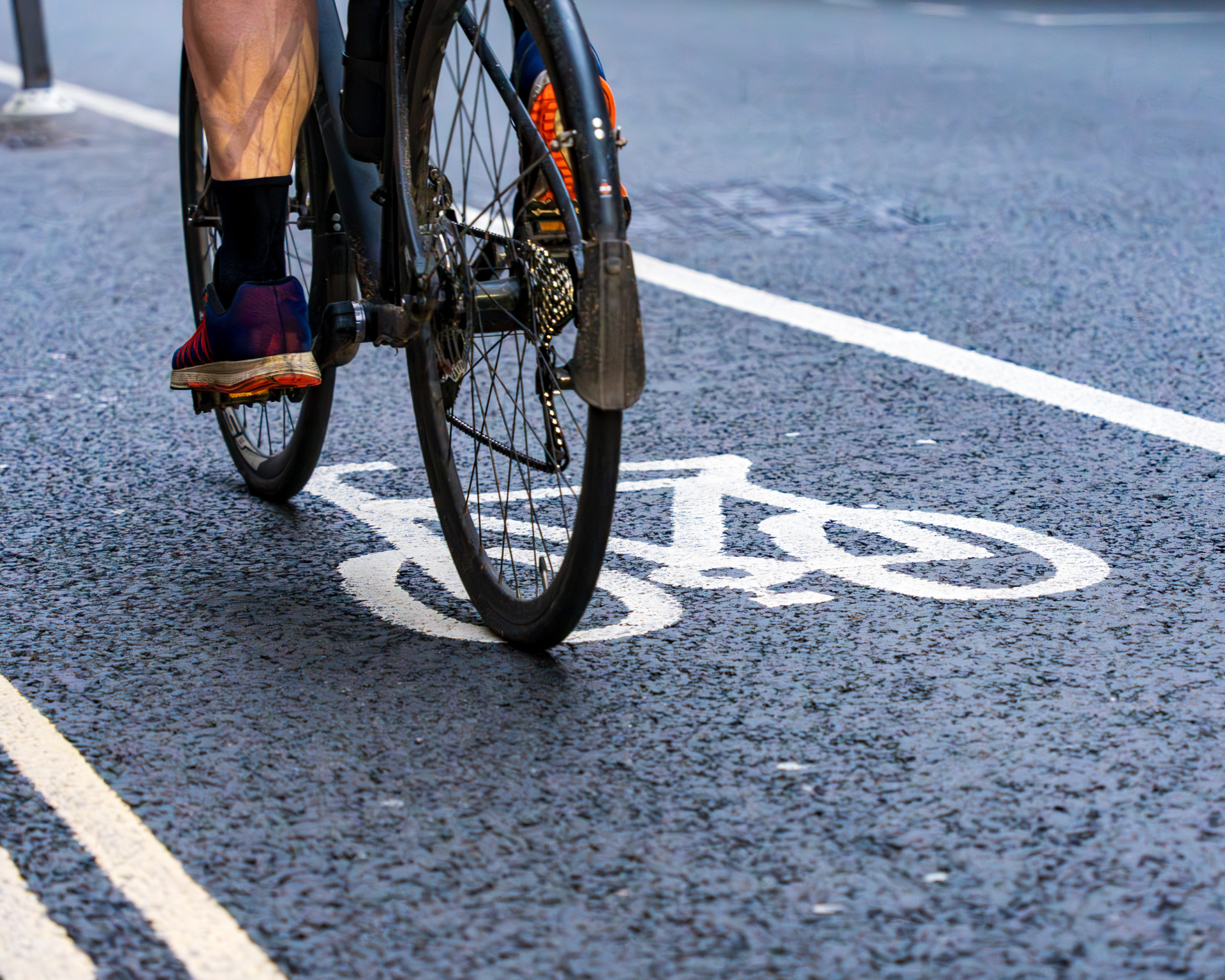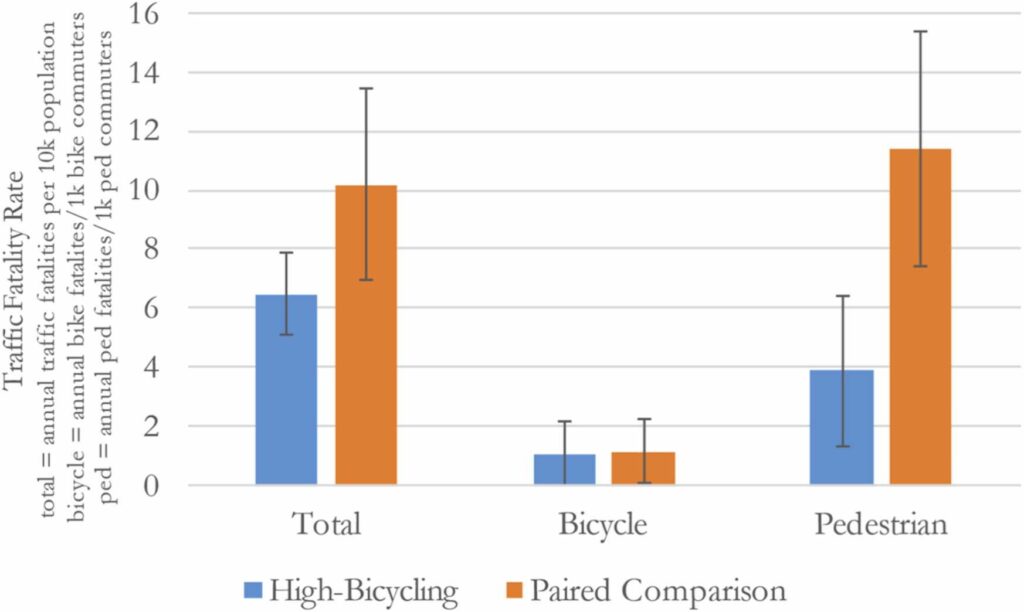Road Safety Benefits in Bike-Friendly Cities
Cities with higher rates of biking and more biker-friendly infrastructure tend to be safer for all road users, including pedestrians.

Read Time: 2 minutes
Published:
Biking benefits individuals and communities. It reduces the risk of cardiovascular disease, cancer, and diabetes while lowering stress. Communities realize cleaner air, stronger social connections, and lower transportation costs. Despite these benefits, less than 0.6% of Americans use a bike in their daily commute compared to 30% of those living in the Netherlands – a country known for being bike-friendly.
Cities with high levels of biking tend to have improved safety for all road users, not just for cyclists. Previous research indicates that environmental factors, such as slower speed limits, maintained bike paths, and increased intersection density, are key factors in improving safety on the road. However, much of this research has focused on large urban areas, raising the question of whether similar safety outcomes occur in small and mid-sized cities.
Nicholas N. Ferenchak and Wesley E. Marshall examined 14 small and mid-sized cities in the U.S. to evaluate road safety for all road users. Seven high-bicycling cities were identified and paired with seven low- or average-bicycling counterparts with similar demographic characteristics. Traffic fatality rates from 2010 to 2019 were used to indicate road safety.

Cities with low or average bicycling rates (shown in orange) had 57% more traffic fatalities than high-bicycling cities. As a result, the authors conclude that cities with higher levels of biking are generally safer for road users.
Pedestrian fatalities were 194% higher in comparison low-use cities, suggesting that bike-friendly infrastructure also protects walkers. Bicycle fatalities were extremely low in both groups, with 75% of the study cities having no bike-related deaths.
Creating a built environment that encourages biking enhances safety for all road users and promotes other non-motorized forms of transportation, which in turn benefits public health.



